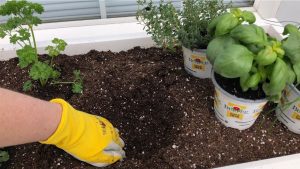Is Your Soil Ready for Your Garden Dreams?
Now’s the time to prepare your garden soil for the plants you plan to add, and nurture the ones already in the ground. Here are some tips:
If the plant is native to the California foothills, it has evolved with this soil, so doesn’t need any amending. Check out our local chapter of the California Native Plant Society sierrafoothillscnps.org for a comprehensive list of foothill and California natives. If it’s native to other parts of California (coast, desert) or Mediterranean-like climes, you might have to add amendments to improve soil texture and to improve nutrient levels or pH.
Your soil’s texture affects how water, air and nutrients move through the soil. Texture falls into one or more of these categories: coarse (sandy), medium (loamy) or fine (clay). Each has its advantages and disadvantages. Our rocky, clay-heavy soil is hard to dig and often presents problems with drainage; but of all the soils, it is typically richer in nutrients and holds moisture better. Loamy soil is often ideal in terms of texture, but might be lacking in nutrients. Sandy soil has excellent drainage, but because of that, doesn’t hold nutrients well.
The best amendment for most soil textures is organic matter: compost, leaf mold, aged manures, peat moss, grass clippings, sawdust or rice hulls. Research has shown that for existing plants in your garden and new plantings, it’s best to add a couple of inches of organic matter on top of the soil rather than tilling it in. Tilling, especially when soil is wet, is actually harmful to the beneficial ecosystem in the soil. So, put the amendments on top and let Mother Nature (earthworms, microorganisms, biochemistry) do the work for you.
The most common soil nutrients are nitrogen, phosphorus and potassium—the NPK ratio you see on fertilizer labels—with calcium, magnesium and sulfur also in the mix. Many foothill soils are low in nitrogen and phosphorus. For low nitrogen levels, consider adding aged poultry manure, fish emulsion or bone meal. Nitrogen leaches easily from soil, so applying it in slow-release forms is best. For soils low in phosphorus, add bone meal, rock phosphate or superphosphate.
Foothill soils are also likely to be deficient in calcium. Agricultural limestone, oyster shell lime or manure can help. (Dolomite limestone adds excessive magnesium to soil and so is not recommended for the foothills.)
Your soil’s pH is a measure of how acidic or alkaline it is. Foothill soils tend to be slightly acidic, so plants that prefer normal to acidic soil do best. To make your soil even more acidic, try adding sphagnum peat moss. For a more alkaline soil, add limestone or chicken manure, which is high in salts.
No matter the amendments you use, be sure to do two things before using them: research the plant(s) you have or plan to add to determine their ideal soil; and always read the labels on fertilizers. Happy planting!
Rachel Oppedahl is a University of California Cooperative Extension Master Gardener of Tuolumne County.

